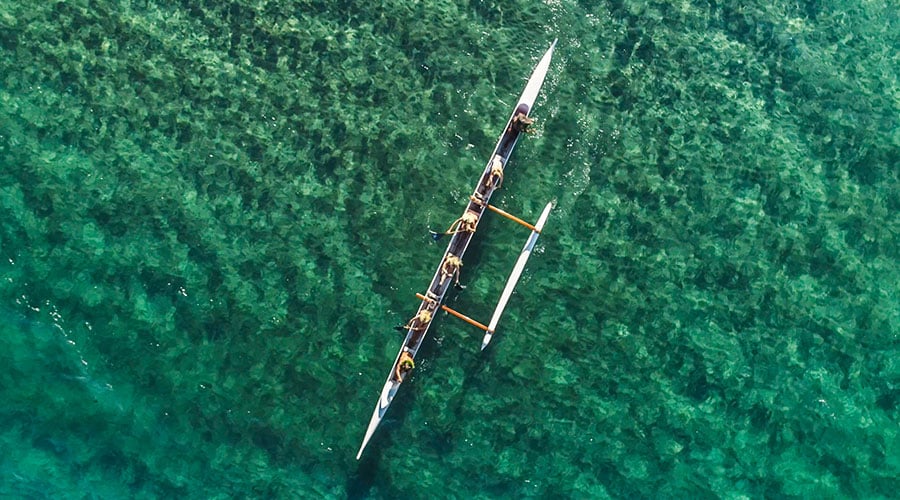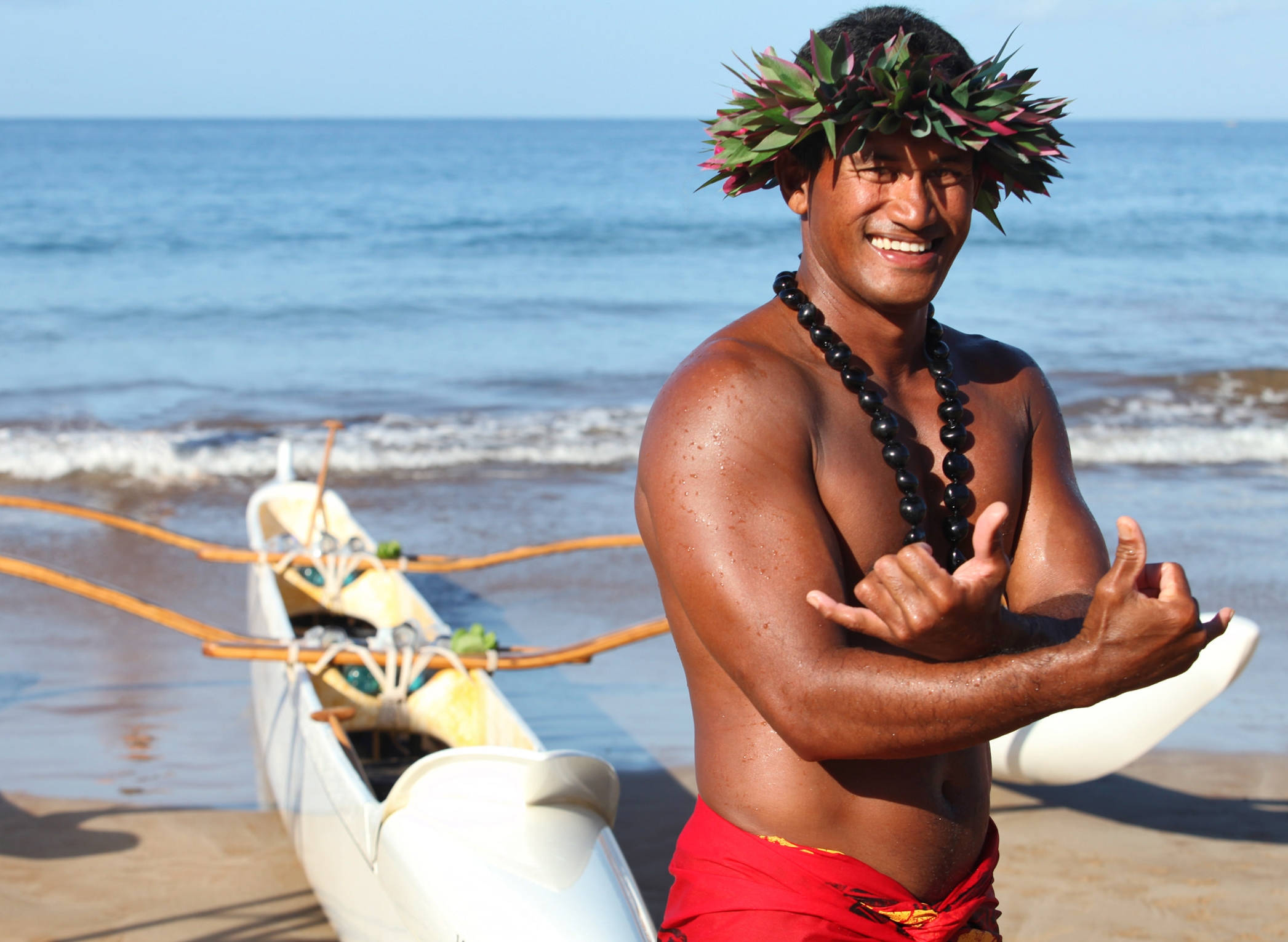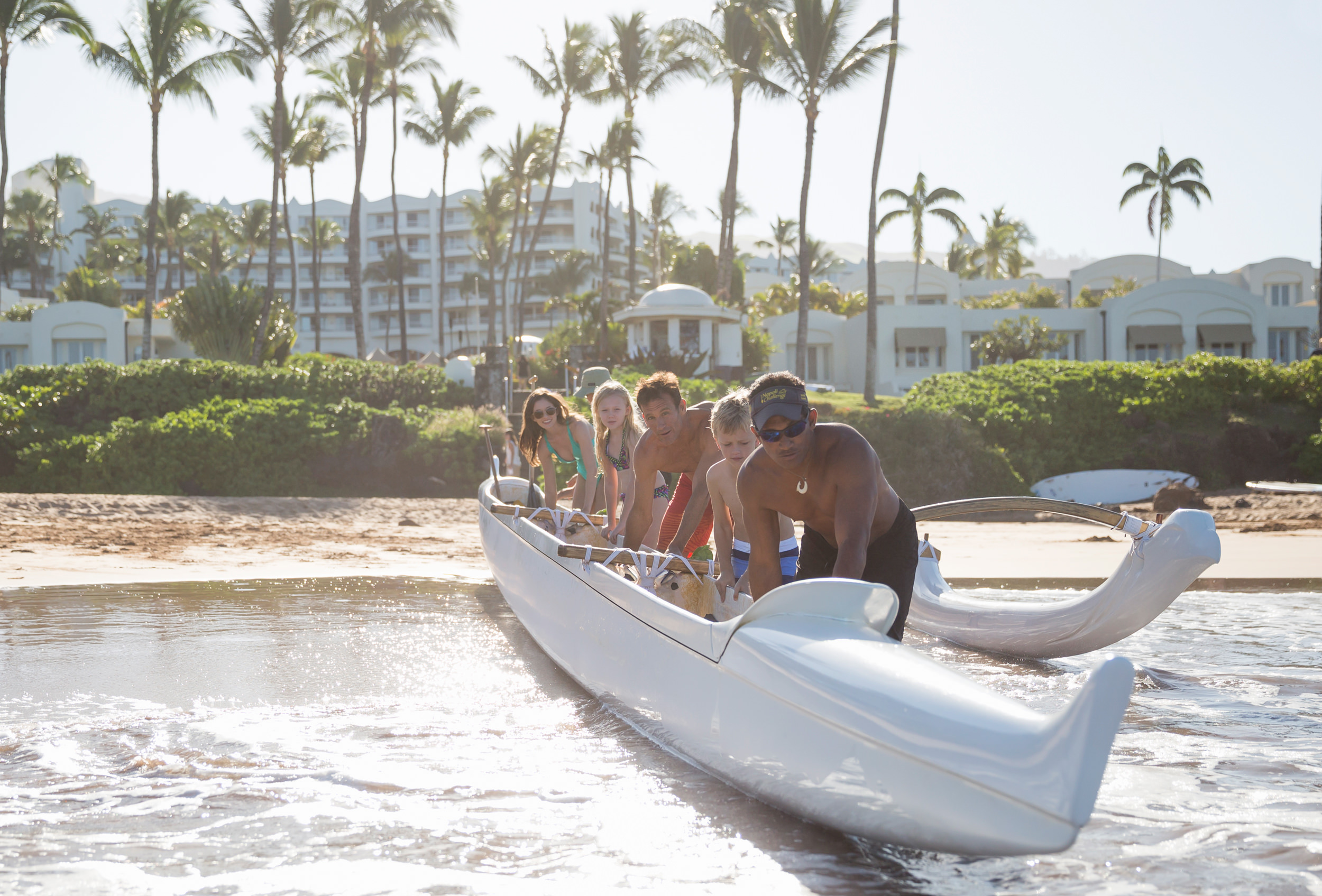The History and Tradition of Canoes (Waʻa) in Hawaiʻi
Centuries ago, the outrigger canoe landed on the shores of the Hawaiian islands. Led by Polynesian explorers navigating by the stars and migrating birds, the sailing vessels were filled with essentials needed to survive the long voyage and establish life on new territory, including plants, food, water, and not least of all, hope.
Much in the way that hula is not merely a dance, canoes are not just boats — they are part of the fabric of Hawaiian culture, imbued with the struggles and triumphs of its people from their earliest days.
Due to the challenging conditions of land and sea, the canoe itself played a key role in the flourishing of Hawaiian life. When the rugged terrain made traversing by foot impossible, canoes transported people and materials from one side of an island to another, as well as between islands. Some canoes were fashioned with sails to power through tricky channels, while others moved by the force of unified paddling for shorter distances. Smaller two- to four-man canoes were built for fishing, and during wartime, canoes were also used for battles, carrying weapons and utilized for surprise landings on rival territory. (It’s little wonder, then, that the canoe carver was highly revered in ancient Hawaiian society.)

The design of the canoe evolved with time, experimentation, materials, and needs — upon the discovery of koa wood on the island of Hawaiʻi, entire hulls were built with a single tree trunk. The building of canoes involved the strength of many people, along with the kahuna to direct the process and offer prayers at each step. With a deep respect for the natural world, animals like pigs and birds were included in ceremonies blessing newly built canoes.
Today, Hawaiian culture endures through the use of outrigger canoes for fishing, traveling, and recreation. Canoe clubs operate not only to train racers for competition, but as opportunities to pass on the local traditions. In these clubs, many members start as a keiki (child), learning the Hawaiian language, mele (song), and oli (chant) and embarking on cultural excursions. Being part of a canoe club is being part of an ʻohana (family) — weekly regattas bring hundreds of people together on the beach to root for their clubs and give them an opportunity for cultural practices.
You don’t need to be part of a canoe club to get an authentic taste of what it’s like out on the water, though: the Fairmont Kea Lani offers a Hawaiian Canoe Experience designed to immerse visitors in the rich cultural significance and tradition of outrigger canoes. Guides first offer a little history lesson and what to expect on the water, and after learning basic commands in Hawaiian such as imua (forward) and lawa (stop), each person is assigned a seat on the canoe. In preparation, the guide will sing a chant to ask permission from ancestors to enter the water.

Guide Solomon Pali describes the Hawaiian mindset before getting in the ocean, “As we enter these worlds, we open our eyes and ears to receive it. Whatever you get, that’s a blessing and be grateful for it.”
Once on the water, paddlers stroke in unison from the beach and out by the reef. Guests may be greeted by curious honu (turtles) who love to swim right up to the canoe, and if the season is right, they may catch a glimpse of whales breaching out of the water. Guests can also jump off the canoe to explore the reef more closely with a mask, or stay on the canoe while the guide tells stories about the island and all the creatures living in the ocean. The guide may even offer you a sea urchin, safely placing it on the palm of your hand to feel the sensation of its movement.
In Hawaiʻi, there are countless ways to frolic in the ocean, from snorkeling and surfing to stand-up paddle boarding and kayaking — but a journey on an outrigger canoe goes beyond recreation. It’s a Hawaiian practice that deepens your connection to nature and the ancestors with each stroke. Pali puts it best when he says, “To us, the canoe is a life entity. She is alive. She’s a part of us in our spirit and in our body. If it wasn’t for sailing canoes, we wouldn’t have Hawaiians today.”

Space for the Hawaiian Canoe Experience is limited, so please sign up prior to your arrival to ensure your seat. During quieter times of the year, there may be room to book with the concierge or directly on the beach at the activities booth.

